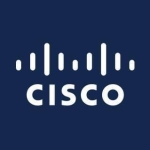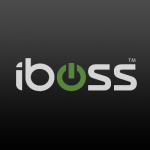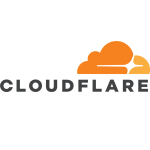What is our primary use case?
Me and my team have been managing site-to-site and remote access VPNs. We have been doing centralized logging through FortiManager and applying security policies, such as web filtering and application control across distributed branch locations.
I have also handled firmware upgrades, security patching, and integrating the Fortinet FortiGate logs within SIEM tools, such as Splunk, for threat monitoring.
How has it helped my organization?
I have integrated SD-WAN capabilities with Fortinet FortiGate by configuring multiple WAN links for dynamic path selection, load balancing, and failover based on performance metrics. I have used application-aware routing to prioritize critical traffic, such as VoIP or business apps, over high-quality links, while sending less critical traffic over backup circuits. We have managed and monitored these through FortiManager and FortiAnalyzer, ensuring visibility and automated alerts if link performance degrades.
The network performance has shown a significant positive impact. By utilizing features such as dynamic path selection and application-aware routing, we've been able to reduce latency for critical applications such as VoIP and video by 20-30% during peak times. Additionally, we’ve minimized downtime through automatic failover between links. This approach has also allowed us to cut costs by routing non-critical traffic over lower-cost circuits while keeping high-priority applications on premium links.
I have used the unified SASE feature a little bit, and it is very effective because it consolidates firewall, IPS, and other features such as sandbox into a single platform. It simplifies the management since we do not have to rely on separate appliances. It also helps with faster threat detection and response, especially when paired with FortiAnalyzer and SIEM tools, such as QRadar. The logs and events are correlated automatically, which makes a significant difference.
What is most valuable?
Something that stood out for me once I started using Fortinet FortiGate was the centralized management through FortiManager and how easily I could deploy consistent policies across multiple sites. The VPN configuration was also very straightforward compared to some other platforms. The integration with SIEM tools makes monitoring and incident response much smoother, which stood out to me.
What needs improvement?
For the future, one improvement area is the complexity of SD-WAN configuration. When managing a large number of sites, the GUI is user-friendly, but when scaling deployments, it sometimes requires more manual fine-tuning or scripting.
Another concern is reporting. FortiAnalyzer is powerful, but generating customized reports can be cumbersome compared to some other tools. Additionally, seeing deeper automation and API integrations would be beneficial so that policy updates and SD-WAN changes can be pushed faster across large environments.
For how long have I used the solution?
I have been using FortiGate for about four to five years in various settings. My experience includes working with Fortinet FortiGate and other firewalls and Panorama across multiple roles. I have been involved in designing as well as managing policies. Additionally, I have handled upgrades and migrations.
What do I think about the stability of the solution?
The performance and stability of Fortinet FortiGate has been strong in both small and large environments. The throughput and latencies are very good, even with multiple security features such as IPS, antivirus, or SSL inspection enabled simultaneously. I have found them to be reliable with minimum downtime. The Fortinet high availability features work effectively to ensure continuous network availability.
What do I think about the scalability of the solution?
Scalability is quite straightforward. They can scale from small branch offices to large enterprise environments. Their model hardware options and virtual firewall instances allow flexible deployment. For larger data centers or higher complex environments, sometimes Palo Alto or Cisco solutions offer more advanced scaling options, but Fortinet FortiGate is definitely competitive for enterprise needs.
How are customer service and support?
I have worked with them a bit, and we usually start by opening a support ticket through the Fortinet support portal. I also remember calling their TAC hotline directly for priority one issues, particularly for major VPN outages or SD-WAN failures.
I typically provide the necessary diagnostics upfront, such as logs, packet captures, and debug outputs, so we can move quickly towards a resolution. Most cases are resolved fairly quickly, but for more complex bugs, they may suggest fixes or recommend firmware updates. In such cases, it just takes a bit more time.
I would rate their support an eight out of ten. They are generally very responsive and knowledgeable, especially regarding firewall and VPN issues. While resolutions can take longer for complex problems or new features, overall, the support team is very helpful and proactive in providing patches and workarounds.
How would you rate customer service and support?
Which solution did I use previously and why did I switch?
I have used many alternatives to Fortinet FortiGate, including Palo Alto Networks firewalls and Cisco ASA Firepower. Palo Alto has strong application visibility and threat prevention, while Cisco excels in routing and integration. I have also worked with Juniper, which is great for scalability, and Check Point. I am comfortable adapting to different firewall ecosystems depending on the environment and requirements.
How was the initial setup?
It wasn't that hard. Overall, it was pretty straightforward. For smaller sites or branch offices, the GUI is intuitive and clear. FortiManager helped streamline policy pushes across multiple devices, which made it easy to manage. However, for more complex deployments that involved SD-WAN or advanced features, there was some initial complexity in fine-tuning configurations and integrating with our existing infrastructure. Despite this, it was manageable with good planning and testing. Overall, the process was relatively easy.
Maintenance is definitely a part of my role. I am responsible for applying firmware updates, security patches, and configuration backups on FortiGate devices to ensure stability and security. While Fortinet provides regular updates and technical support, the day-to-day maintenance, monitoring, and troubleshooting are handled internally by our network team.
What's my experience with pricing, setup cost, and licensing?
I haven't looked into that directly, as I am not involved in the purchasing or budgeting aspects. However, I believe Fortinet offers competitive pricing compared to other enterprise firewall vendors. Their licensing model is straightforward, especially regarding security features like anti-filtering, IPS, and web filtering.
The choice really depends on the specific features needed, such as advanced SD-WAN capabilities, which can increase costs. Therefore, it is important for organizations to plan their licensing effectively to optimize value.
What other advice do I have?
I have used FortiClient as part of the Fortinet SASE deployment, primarily for remote users, providing secure access via VPN and ZTNA, along with endpoint protection such as web filtering and threat detection. I have also deployed it to integrate with Fortinet FortiGate and the cloud so users can get consistent policies whether they are on-site or remote. It is useful because it centralizes management and policy enforcement, but I have noticed it can use more system resources on endpoints, so tuning the profiles is important for performance.
I would rate Fortinet FortiGate an eight out of ten. It offers a great balance of performance, security features, and ease of management. However, there is room for improvement in areas such as scalability for extremely large environments and deeper automation. Nonetheless, it is a solid platform that fits well in most enterprise networks. Therefore, I would give it an eight out of ten.
Disclosure: My company does not have a business relationship with this vendor other than being a customer.



















